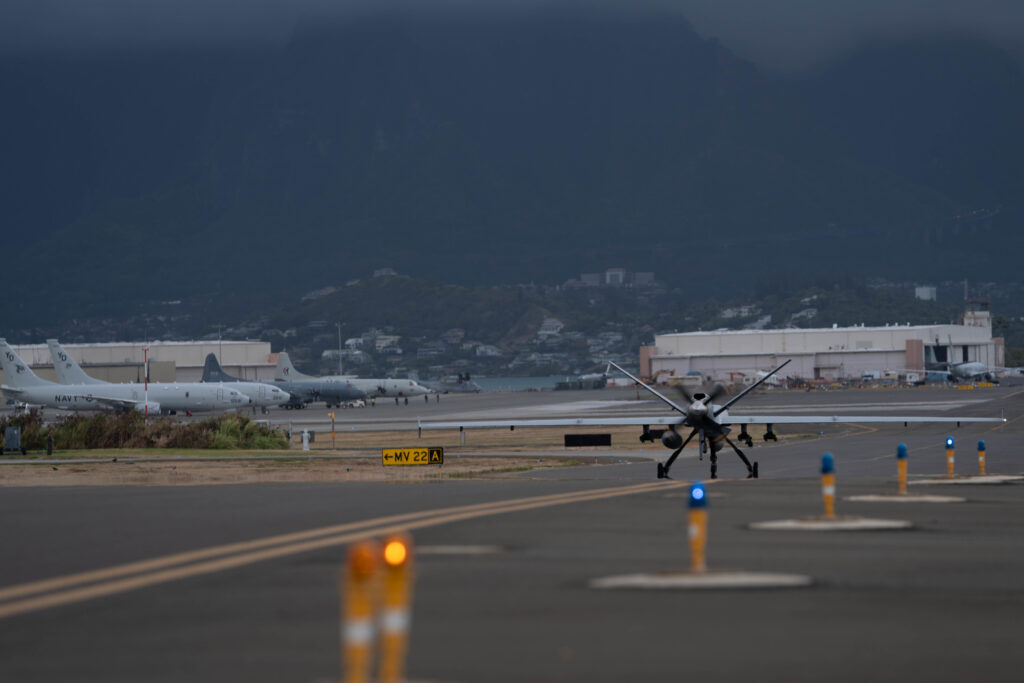
JOINT BASE PEARL HARBOR-HICKAM, Hawaii — The first use of a U.S. Air Force MQ-9A Reaper, a remotely piloted aircraft, occurred during a Rim of the Pacific (RIMPAC) 2022 sinking exercise, July 12, the Air Force said July 20.
Participating in the SINKEX provided an opportunity for units from Australia, Canada, Malaysia and the United States to test weapons and systems in a simulated environment, working against opposing forces and eventually culminating in the explosion of a decommissioned naval vessel and marked a significant development in maritime warfighting capability.
The presence of the MQ-9A’s at the world’s largest international maritime exercise provides an opportunity for combined and joint-force collaboration.
“They need us and we need them,” said U.S. Air National Guard Capt. Phillip West, the RIMPAC MQ-9 maritime force integration lead. “That’s where RIMPAC comes into play.”
He said the Air Force and the Navy speak different languages, each using their own distinct jargon. Working together on exercises like RIMPAC and the SINKEX promotes smooth communication between the branches. This ensures sharpened combat readiness, increased strategic impact, and strengthened deterrence efforts by providing tactical proficiency to MQ-9A aircrews.
With the MQ-9 flying over the ocean as opposed to routine training in remote land locations, the main objective for the SINKEX was the gathering of practical data about operating in a maritime environment as opposed to a desert environment.
“The data that we have in a simulator feeds off of real-world engagements like SINKEX,” West said. “With what’s called the new Smart Sensor, they’re trying to build a database of what ships look like. They need us to actually do it so that they can build a database, and then they can fit it into a simulator so we can practice it and have more efficient training.”
This year is historic not only because of the MQ-9A but because it marks a return to a full-scale exercise not seen since before the COVID-19 pandemic. The 2020 iteration of RIMPAC was reduced in scale to be conducted with less face-to-face contact. The return to a full-scale exercise demonstrates capable, adaptive partners working together to increase the interoperability, resiliency, and agility needed by the joint and combined force.
- VMUT-2 begins assembly of the first 2nd MAW MQ-9A Reaper - April 18, 2024
- CORAS Rolls Out Early Release of Driver Trees Tool - April 18, 2024
- VMM-268 Marines Prepare for Marine Rotational Force Darwin - April 18, 2024






